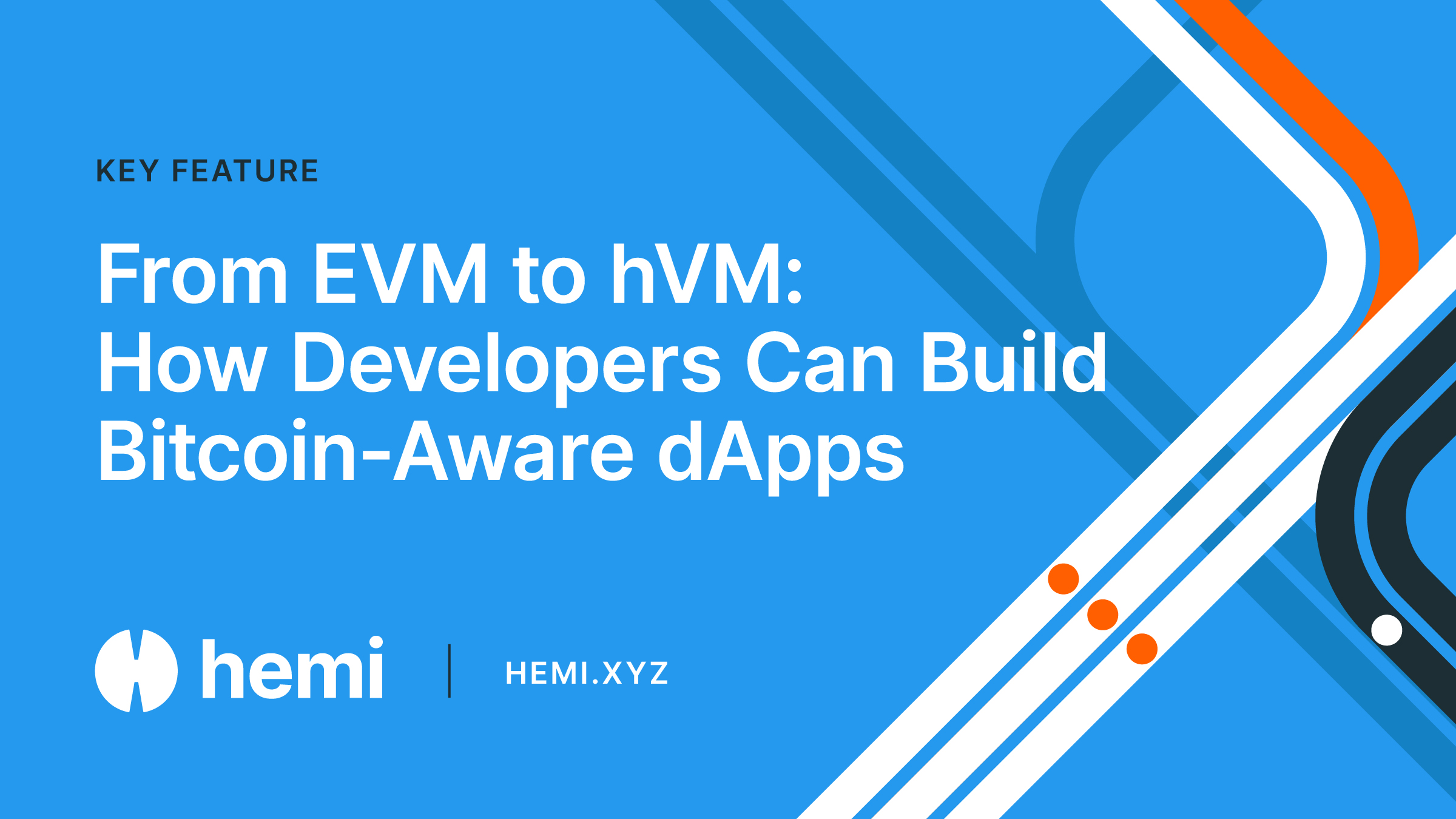- Ethereum
- Hemi
- Learn Center
- August 1, 2025
From EVM to hVM: How Developers Can Build Bitcoin-Aware dApps

Ethereum’s EVM (Ethereum Virtual Machine) has been the dominant smart contract environment for years, powering DeFi, NFTs, and countless decentralized applications. But for all its success, the EVM operates in a largely Ethereum-centric world, with limited native access to Bitcoin’s liquidity and security.
Hemi’s hVM (Hemi Virtual Machine) changes that. It’s designed to let developers build Bitcoin-aware dApps that operate across multiple blockchains without relying on risky crypto bridges or wrapped assets.
Why Bitcoin-Aware dApps Matter
Bitcoin is the most secure and liquid digital asset, yet it remains underutilized in most decentralized applications. This is because:
- Bitcoin’s base layer lacks native smart contract functionality.
- Integrating BTC into EVM dApps often requires centralized custody or wrapped BTC.
- Cross-chain solutions have historically introduced latency and security tradeoffs.
Bitcoin-aware dApps solve this by making BTC a first-class citizen in multi-chain application design — something the hVM was built to enable.
Moving from EVM to hVM
For developers already familiar with EVM smart contracts, the hVM offers a familiar foundation with extended capabilities for cross-chain interoperability. You can still write Solidity-like code, but you gain access to APIs and instructions for:
- Querying Bitcoin state directly in your dApp logic.
- Triggering actions on Ethereum, Bitcoin, and other chains from a single execution environment.
- Settling transactions using Bitcoin as the security anchor via Proof-of-Proof (PoP).
The result is a seamless upgrade path: EVM skills translate directly to hVM, but your application gains access to Bitcoin-native data and assets.
How hVM Makes Bitcoin Integration Possible
The hVM uses crypto tunnels to connect execution environments across chains, verified by PoP commitments embedded into the base layers themselves. This approach:
- Removes the need for external bridge validators.
- Eliminates the wrapped token dependency that has plagued cross-chain DeFi.
- Keeps consensus-level security intact for every chain involved.
In practice, this means your dApp can accept BTC collateral, settle in Bitcoin, or pull Bitcoin block headers for verification — all without leaving the hVM environment.
Example Use Cases for Bitcoin-Aware dApps
- Cross-Chain Lending — Accept BTC as collateral while issuing loans in Ethereum-based stablecoins.
- Multi-Chain DEX — Enable BTC/Ethereum swaps without centralized custody.
- Bitcoin-Powered NFT Platforms — Mint NFTs on Ethereum with metadata or provenance anchored in Bitcoin.
Why hVM is the Next Step for Cross-Chain Development
The EVM has proven the power of decentralized applications, but it’s bound to Ethereum’s orbit. The hVM expands that horizon, letting developers design Bitcoin-aware dApps that interact natively with the world’s largest crypto asset and the ecosystems around it.
With the hVM, Bitcoin’s liquidity isn’t just bridged — it’s integrated, verified, and usable across multiple chains without compromising security.